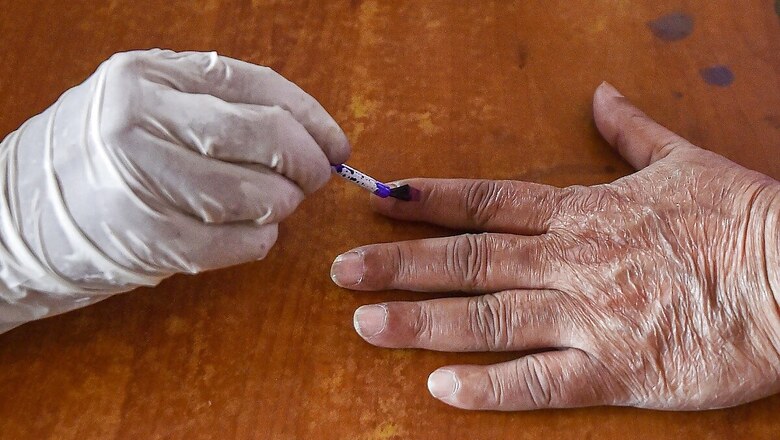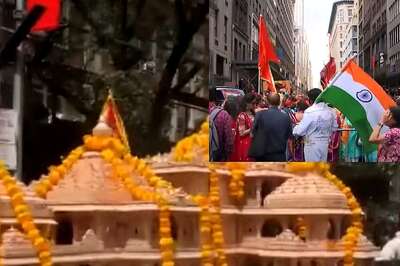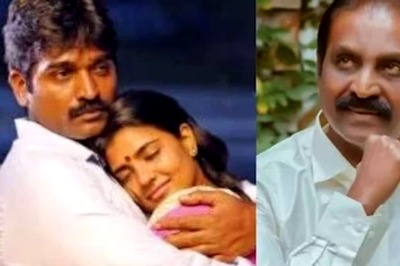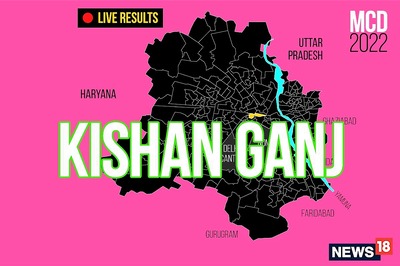
views
The years have changed, but the timing has not. It was in June 2016, just eight months before the Uttar Pradesh assembly elections, when the-then Bharatiya Janata Party MP Hukum Singh had come forward with a sensational allegation of “Hindus fleeing from Kairana town of West UP, following threats and intimidation by Muslims”. The so-called Hindu Exodus soon became a big poll issue. Five years down the line, now in the run-up to the next electoral battle, it is the issues of “love Jihad” and “religious conversion” that have taken the centre stage.
In the politics of Uttar Pradesh, communal polarisation has been a consistent feature for decades now— the other big factor being the caste arithmetic. Starting from the heyday of the Ram temple movement spearheaded by the Rashtriya Swayamsevak Sangh and the BJP in the mid-1980s to contemporary times, political discourse in Uttar Pradesh has been greatly influenced by the communal agenda. For the BJP, issues of polarisation have often been used to counter the caste calculations of its opponents— the politics of ‘kamandal’ vs that of ‘mandal’.
And since all such issues serve the larger electoral-political agenda, they are raised, used and then also forgotten with time. In the late 1980s and early 1990s, the Ayodhya row built the momentum for the saffron forces, hoisting the BJP onto the centre stage both in national and state politics. Years later, as the construction of the Ram temple became an achievable reality, and it more or less ceased to be an electoral agenda, new issues have sprung up.
Over the past decade, there is a long list of such contentious issues that have helped shape polarisation and counter- polarisation, thereby impacting the electoral outcomes.
“Bahu-beti samman” and Muzaffarnagar riots
The bloody Muzaffarnagar riots of 2013, which claimed 63 lives, happened in the shadow of rising sentiments around the aggressive campaign of “bahu-beti samman bachao (protect the honour of our daughters-in-law and daughters)”. The murder of two Jat youths in Kawal village soon got a communal twist and was swiftly linked to larger sentiments around the controversial drive.
With a Hindu-Muslim angle built up, the BJP got the opportunity to shape a strong narrative of minority appeasement against the-then Akhilesh Yadav-led Samajwadi Party government. A series of big panchayats were held in Muzaffarnagar and nearby districts. With communal tensions on the rise, almost 15 days after the murders, riots broke out.
For the BJP, both the riots and the strong momentum built around the “bahu-beti samman bachao” campaign proved to be tools to attack rivals, especially in the run-up to the 2014 general elections. Accused of riots, BJP leaders like Sangeet Som and Suresh Rana were felicitated in electoral rallies. The polarisation that happened saw a massive shift of the dominant Jat vote bank in West UP, towards the BJP.
From “loudspeakers for temples” to “exodus of Hindus”
Riding on a sustained campaign against the alleged minority appeasement under the Akhilesh Yadav government, the next big flashpoint between the BJP and the SP in the build-up to the 2017 state assembly polls was in Kanth area of Moradabad.
In June 2014, a row erupted over police action of removing loudspeakers from a Hindu temple. Sounds from the loudspeaker were purportedly disturbing the largely Muslim population there during the month of Ramzan. The issue was soon picked up by the Hindu organisations and the BJP and was seen as a clear case of minority appeasement.
As violent clashes broke out between the BJP workers and police over holding a mahapanchayat in Moradabad, heat was generated around the larger demand of banning the use of loudspeakers for azaan from mosques. A few months later though, Hindu and Muslim villagers of the area reached a consensus and the loudspeaker was reinstalled in the temple,
While the heat died down on the issue, another fire was about to be stoked. In 2016, the-then BJP MP Hukum Singh made a sensational claim that several Hindu families had been forced to flee from Kairana, a town in the western UP district of Shamli, because of threats and intimidation from the majority Muslims in the area. The BJP parliamentarian even released a list of 63 such families.
With the allegation getting national attention, it became a rallying point for communal polarisation ahead of the 2017 elections. Later, police investigations termed the charges baseless. Even Hukum Singh himself backtracked. However, by then the campaign around the “exodus of Hindus” had served political interests.
“Love jihad” and “religious conversion”, ahead of 2022 polls
As Uttar Pradesh gears up for assembly polls early next year, the issue of ‘love jihad’, involving Muslim men allegedly converting Hindu women by marriage, and forced religious conversion, are now at the centre of the political discourse. After a controversial law against forced and illegal religious conversion brought in by the Yogi Adityanath government in December last year, the entire issue has come under the spotlight following UP anti-terrorist squad (ATS)’s big expose on a “pan-India conversion racket” being run by two Muslim clerics. The state police claims it already has a list of at least a thousand Hindu men, women and children who were converted to Islam by the two. The possibility of foreign funding and terror links is also being probed.
Even as UP police goes ahead with the investigation, the BJP is already seeing it as a vindication of its stand on ‘love jihad’ and conversions. The chief minister himself has been leading the attack on the issue. During the campaigning for the April-May West Bengal elections, which the BJP lost, Adityanath aggressively raised the issue of ‘love jihad’ in his electoral rallies and even promised to introduce a law against it in the state, if his party were voted to power.
Social scientist and professor at Lucknow University Sudhir Pawar said, “For the politics of Hindutva to thrive, a constant stream of contentious agenda is needed. When the BJP is in the driving seat, such low-intensity communal agendas are often floated,”
Dr Prashant Trivedi of Giri Institute of Development Studies said that while the issues at hand may change, the underlying narrative of “hate politics” remains the same. “In a state like UP, so riddled with caste contradictions, the politics of Hindutva needs new issues and campaigns to override the caste consciousness and unify people on the larger religious discourse.”
Read all the Latest News, Breaking News and Coronavirus News here.



















Comments
0 comment